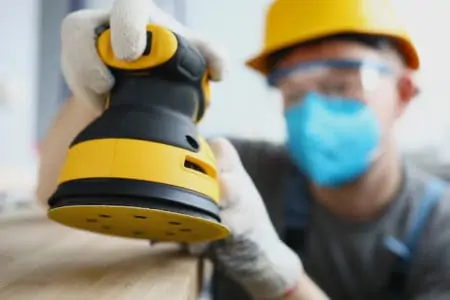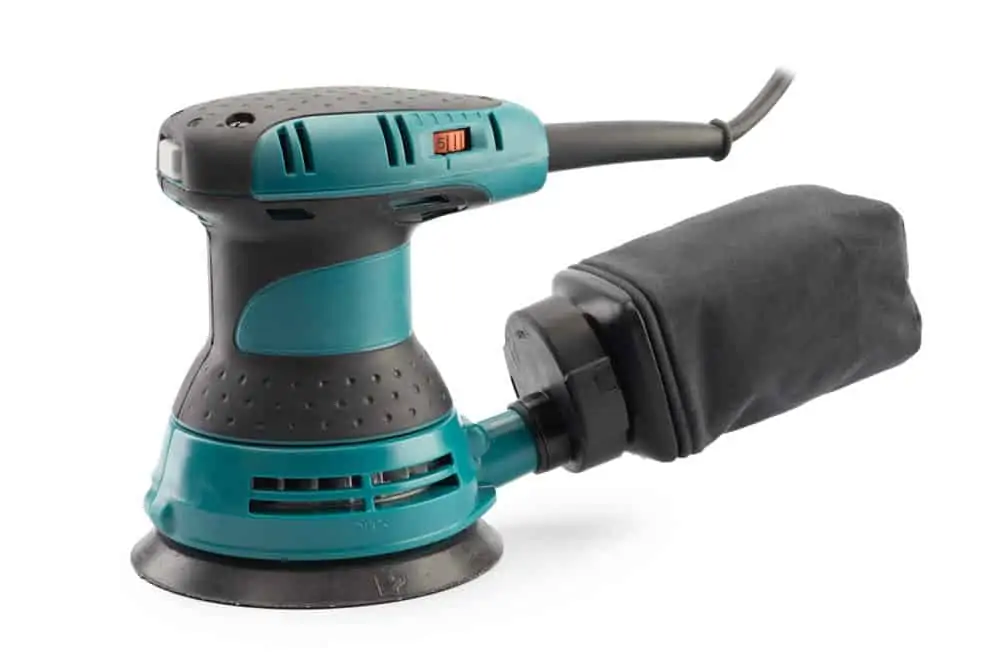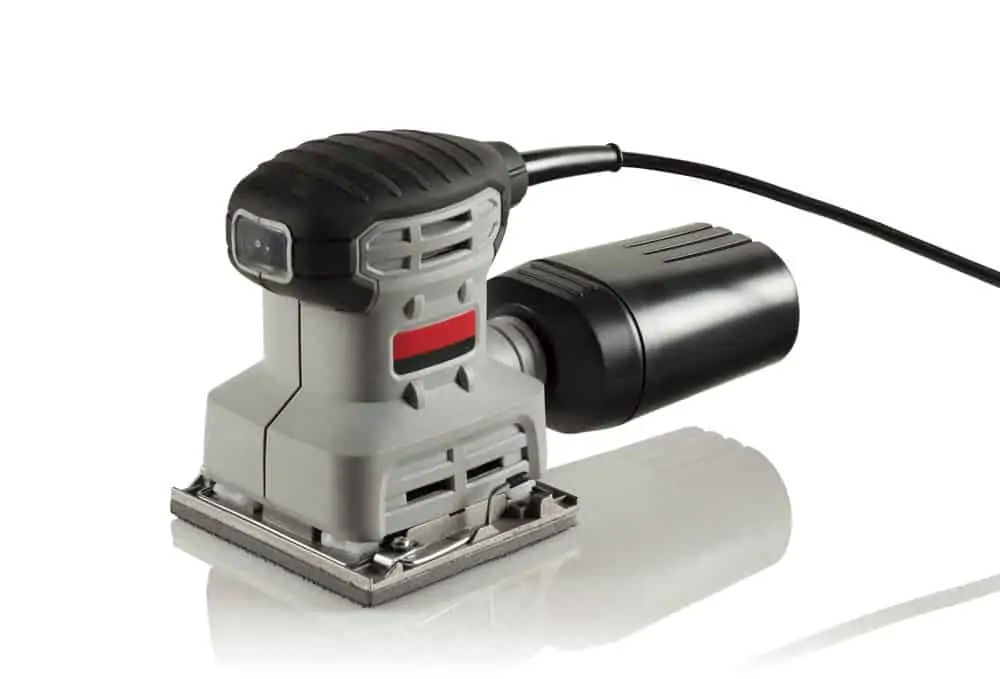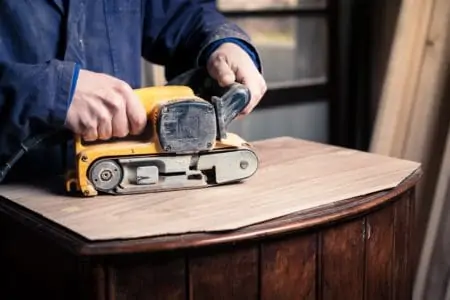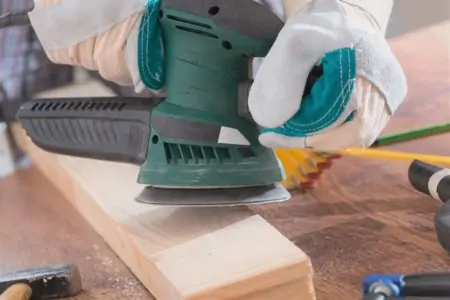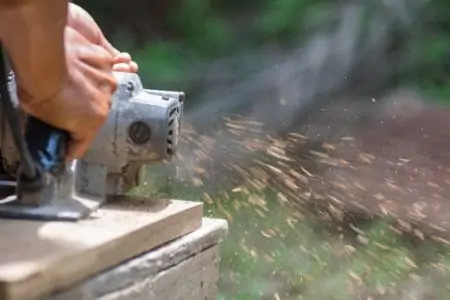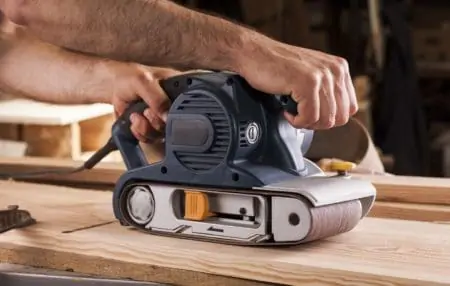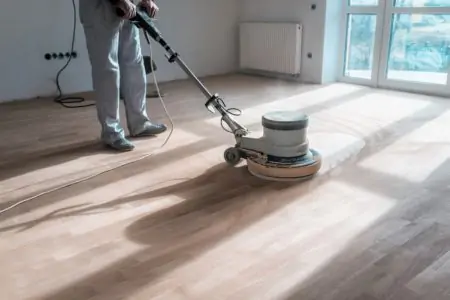If you work with wood, you know that sanding is crucial if you want the best results. Sanding refines rough lumber into a tactile and pleasurable material. But what are the best tools to use?
Sheet sanders and orbital sanders are the most commonly used, but which is best? Join us as we dissect sheet sanders and orbital sanders to get to the facts.
Key Takeaways
- Orbital sanders are best for large projects, removing rough surfaces, and working on various materials like wood, metal, and plastic.
- Sheet sanders are ideal for achieving finer detail, reaching tight corners, and providing a smooth finish on wood or metal surfaces.
- Orbital sanders rotate sanding discs and have higher power output, while sheet sanders have square or rectangular pads that move back and forth with medium power.
- Sheet sanders tend to be more affordable and use less expensive sandpaper compared to orbital sanders and their sanding discs.
Orbital Sanders vs. Sheet Sanders
When deciding which to use, think about the size of your project and the level of detail you want to achieve. Orbital sanders are better suited to larger tasks, requiring aggression to remove rough surfaces and blemishes.
On the flip side, sheet sanders give you the highest quality finishes, making them the go-to tool for furniture makers and bespoke woodwork projects. Also, body repair centers love the versatility of sheet sanders, thanks to the level of detail you can achieve.
As we’ve highlighted, there are distinct differences between orbital and sheet sanders, so we decided to list them in a handy guide.
| Features | Orbital Sanders | Sheet Sanders |
| Random motion | Yes | No |
| Sanding pad | Yes | No |
| Sandpaper | No | Yes |
| Used for | Larger projects, metalwork, rougher surfaces | Finishing and finer detail |
| Power | High | Medium |
| Price | $$$ | $$ |
| Portable | Yes | Yes |
| Anti-vibration | Yes | No |
What Is an Orbital Sander?
An orbital sander performs the same tasks as a sheet sander. The difference comes in the way it moves the sanding pad. Orbital sanders rotate a sanding disc at high speed to remove the maximum amount of material.
Many have variable speed control, which means you can adjust the orbits to suit different materials. It gives you greater versatility to swap between hardwood, softwood, metal, and plastic. You can also work with composites and laminates.
You can also buy a random orbital sander, which is slightly different because it rotates the sanding disc using an off-center axis. It creates circular and sideways motion to remove even more material than the orbital sander.
A key advantage of random orbital sanders is they leave fewer swirl marks on the surface of the wood, thanks to the way they move the abrasive pad over the material.
This is commonly referred to as oscillation, hence the name oscillating sander. Orbital sanders typically have 5 or 6-inch discs, and the rotating speed is measured in orbits per minute (OPM).
Orbital sanders are more powerful and have a higher output. They also collect dust in either a dust collection bag or a central vacuum attached to the exhaust port. While these sanders vibrate, some models have anti-vibration control to reduce hand and wrist fatigue.
The other thing to remember with an orbital sander is the sanding discs cost more compared to sheet sandpaper.
What Is an Orbital Sander Used For?
Orbital sanders remove large amounts of material, making them ideal for carpentry, woodwork, metalwork, and auto repair. Orbital sanders are ideal for sanding sheet metal and car bodywork because they remove several layers in one go.
If you need to strip paint from metal and wood, an orbital sander is the perfect tool. It’s worth remembering that orbital sanders are not the best tool if you need to achieve precision. You are better off using a palm or detail sander.
The only downside to an orbital sander is you are limited to what it can do. First, you cannot reach corners and tight spots. Second, it limits the amount of detail you can achieve. You might be better off using a detail or finishing sander for smaller tasks.
Pros
- Remove more material.
- Efficient.
- Better for large projects.
- Works on metal and wood.
- Removes several layers.
- Powerful motor.
- Fewer swirl marks.
Cons
- Not suited to detail.
- Vibrates.
- Less delicate.
- Expensive.
- Cannot reach corners.
What Is a Sheet Sander?
Sheet sanders are also called finish sanders. As the name suggests, this is the tool to use when adding the finishing touches to your projects. Sheet sanders are also called palm sanders, especially compact models.
The main difference between sheet sanders and orbital sanders is the shape of the pad and the way it moves. Sheet sanders typically have a square or rectangular pad that moves forwards and backward, rather than rotating.
Also, you can attach standard sandpaper to the base using special clips that hold it in position. This is much cheaper than buying dedicated sanding discs. Plus, the rectangular shape makes sheet sanders the ideal tool for reaching into the tightest corners.
Because they are perfect for finishing detail with wood and metal, sheet sanders are less aggressive and remove smaller amounts of material compared to orbital sanders.
Sheet sanders are also cheaper than other power sanders, making them the ideal tool for beginners and those working on a budget.
What Is a Sheet Sander Used For?
Sheet sanders are the ideal tool for finishing work. When you come to the final stages of a project and want the smoothest surface possible, reach for a sheet sander. You can also get to edges and corners easier with a sheet sander.
Their less aggressive performance makes sheet sanders a favorite in auto and car body repair shops. Plus, carpenters and woodworkers achieve finer detailing with a sheet sander.
On the downside, sheet sanders remove less material, so they are not suited to large-scale projects. Also, they are not effective at eliminating several layers of paint or varnish at a time, so while they suit auto and body shop environments, sanding paintwork is a chore.
Pros
- Cheaper to buy.
- Sandpaper costs less.
- Reach corners.
- Achieve a smooth finish.
- Better for detail work.
- Lightweight and portable.
Cons
- Lower power output.
- Less versatile.
- Leaves surface marks.
- Not suitable for large projects.
Orbital Sander vs. Sheet Sander FAQs
Make Your Choice
If you like working with wood or metal, a sheet sander and orbital sander are crucial tools. Whether you are working big or want finer detail, both are staple tools for your collection.
However, knowing when to use them is the key to your success because each has its strengths and weaknesses.
